Speciality of Kiwi Bird: The Kiwi bird, a unique and iconic species native to New Zealand, stands out in the bird world for several reasons. Unlike most birds, the Kiwi possesses many characteristics more commonly found in mammals than in aves. Covered in brown, hair-like feathers and equipped with nostrils at the end of its long beak, this nocturnal bird relies heavily on its sense of smell and touch to forage for food. Its uniqueness lies not just in its physical appearance but also in its behavior and ecological role.
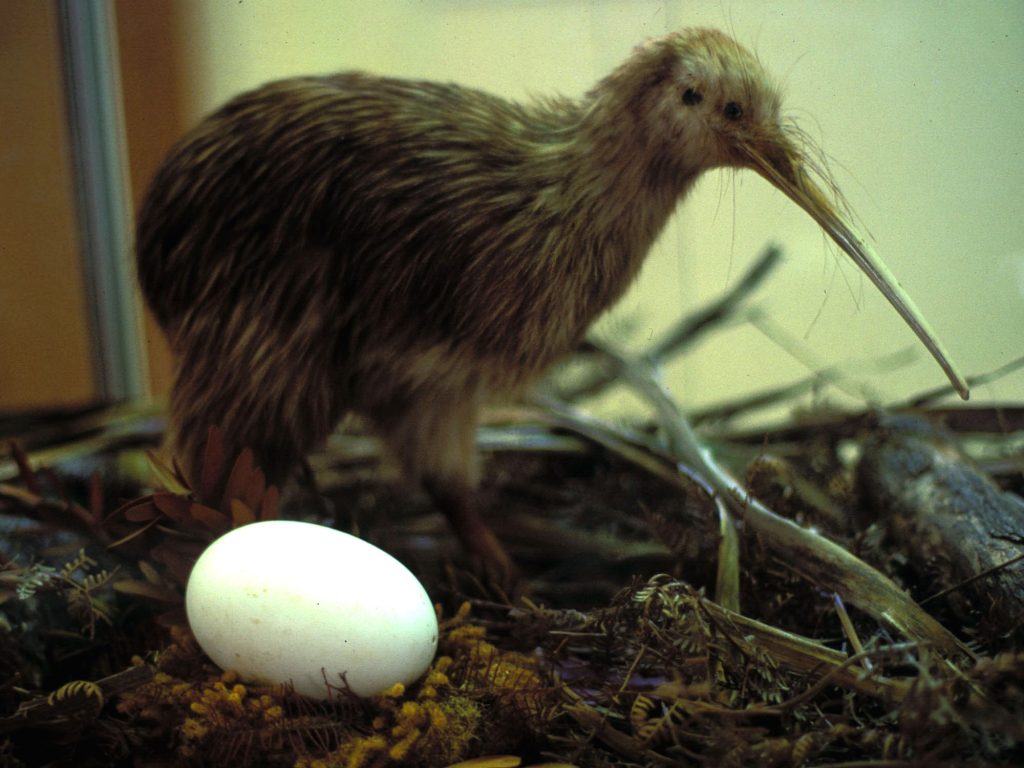
Kiwis are flightless birds belonging to the genus Apteryx, and their closest relatives are the extinct moa. Due to their small wings and large bodies, they cannot fly and instead use their strong legs to run and defend themselves. These birds are shy, elusive, and mostly active at night. They inhabit forests, grasslands, and scrublands, where they dig burrows for nesting and sleep. Their feathers are more like fur, and they possess whiskers and a strong sense of smell, features uncommon in birds but typical in mammals.
This unique combination of traits has made the Kiwi a symbol of New Zealand’s natural heritage and cultural significance, especially among the Maori. Their continued fight for survival against introduced predators such as stoats, rats, and dogs makes them a focal point of conservation efforts.
Key Takeaways
- Kiwi birds are nocturnal, flightless birds native to New Zealand.
- Known for their brown, fur-like feathers and long beaks with nostrils at the tip.
- Kiwi birds belong to the genus Apteryx, with several species like Apteryx mantelli.
- They lay one of the largest eggs in proportion to their body size among birds.
- Kiwi chicks are precocial and leave the nest early.
- Strong legs help them defend against predators.
- Conservation efforts are vital due to threats from stoats, dogs, and rats.
- The Kiwi is a national emblem and icon in New Zealand.
Physical Characteristics of Kiwi Birds
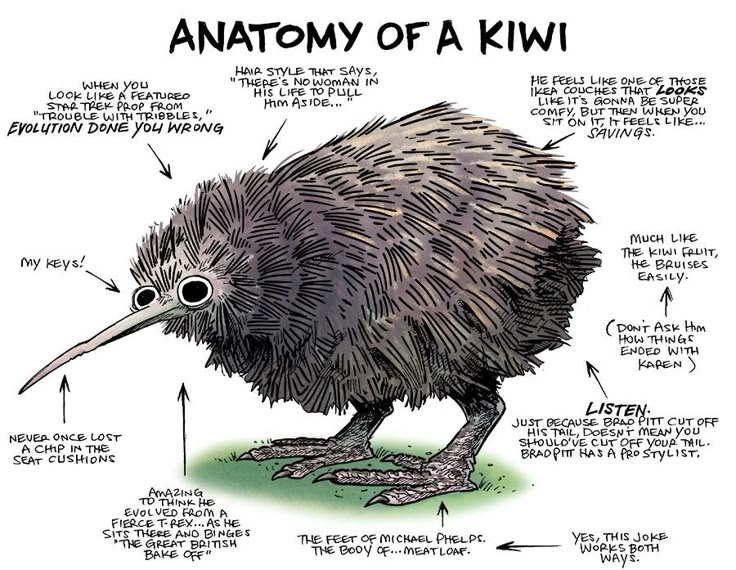
Unusual Traits in Appearance
Kiwis are about the size of a domestic chicken, measuring around 14–20 inches in height and weighing between 1.3 to 3.3 kg, depending on the species. Unlike most birds, Kiwis have a long, slender beak with nostrils at the tip, a trait that aids in sniffing out insects and other small prey hidden in the soil. Their brown feathers resemble fur due to their soft, hair-like texture. This gives them a mammal-like appearance, further enhancing the speciality of Kiwi bird.
Kiwi Bird Size Comparison
| Feature | Kiwi Bird | Average Bird Species |
|---|---|---|
| Height | 14-20 inches | 5-15 inches |
| Weight | 1.3 – 3.3 kg | 0.2 – 2.5 kg |
| Feather Type | Hair-like, brown | Smooth, layered |
| Tail | Absent | Present |
Habitat and Distribution
Native Environments and Locations
Kiwi birds are endemic to New Zealand and thrive in diverse habitats, including subtropical and temperate forests, scrublands, and even grasslands. North Island is home to several Kiwi populations, especially the Apteryx mantelli species. Their burrows are often located beneath tree roots, rocks, or hollow logs. Despite their cryptic nature, Kiwis play a vital role in forest ecology by consuming insects and aiding soil aeration through their foraging behavior.
Kiwi Habitat Types
| Habitat Type | Description | Location in NZ |
| Forest | Dense, native vegetation | North Island, South |
| Scrubland | Shrubby vegetation | East Cape, Northland |
| Grassland | Open plains | Stewart Island |
Feeding Habits and Diet
What Do Kiwis Eat?
The Kiwi’s diet mainly consists of insects, worms, larvae, and other invertebrates. They also consume fruits, leaves, and seeds occasionally. Their keen sense of smell, a rarity among birds, allows them to locate prey underground. They use their long beaks to probe the soil and pull out insects. Kiwis are known to forage at night, relying on their whiskers and strong sense of touch. This makes their feeding habits unique among the aves class.
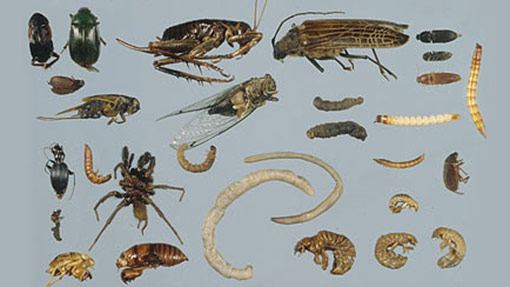
Typical Kiwi Diet
| Food Type | Examples | Function |
| Insects | Beetles, larvae, ants | Protein source |
| Worms | Earthworms | Easy to digest |
| Fruits | Berries, native fruits | Vitamins and energy |
Kiwi Bird Reproduction
Mating and Egg-Laying Behavior
Kiwis are monogamous and form strong pair bonds that can last for decades. During mating season, males emit a high-pitched call to attract females. Once paired, they use a nesting burrow for egg-laying. The female lays a single large egg, often weighing up to 20% of her body weight—one of the largest ratios in the bird kingdom. The male usually incubates the egg while the female focuses on regaining strength.
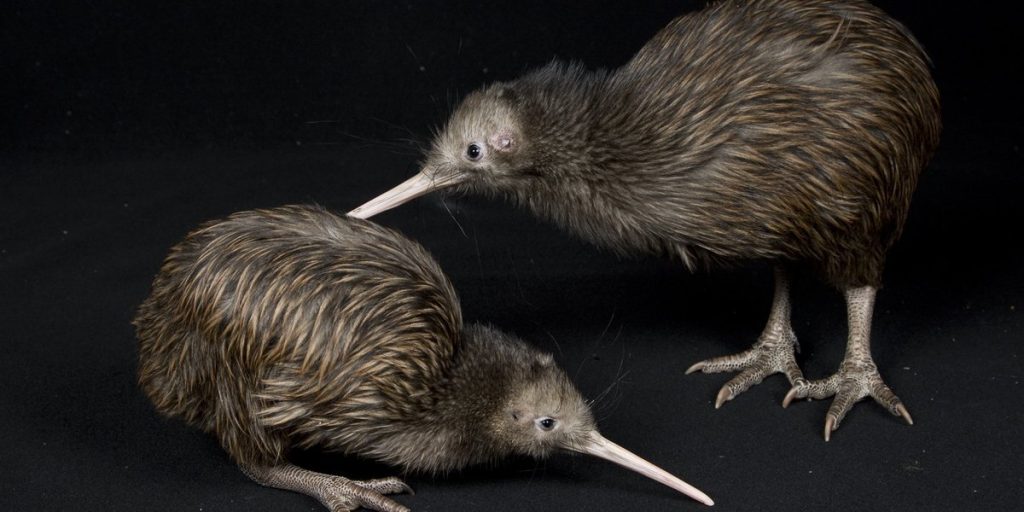
Kiwi Reproductive Facts
| Feature | Value/Description |
| Mating Style | Monogamous |
| Egg Size | ~20% of body weight |
| Incubation Time | 70-85 days |
| Parental Role | Male incubates, female rests |
Kiwi Chicks and Early Development
From Egg to Independent Chick
Kiwi chicks hatch fully feathered and are relatively self-sufficient, a trait known as precociality. They begin foraging on their own within a few days of hatching, guided by instincts rather than parental instruction. Despite this independence, many chicks fall prey to predators like stoats and rats in the first few weeks. Conservation centers often collect eggs and raise chicks in predator-free zones before releasing them into the wild.
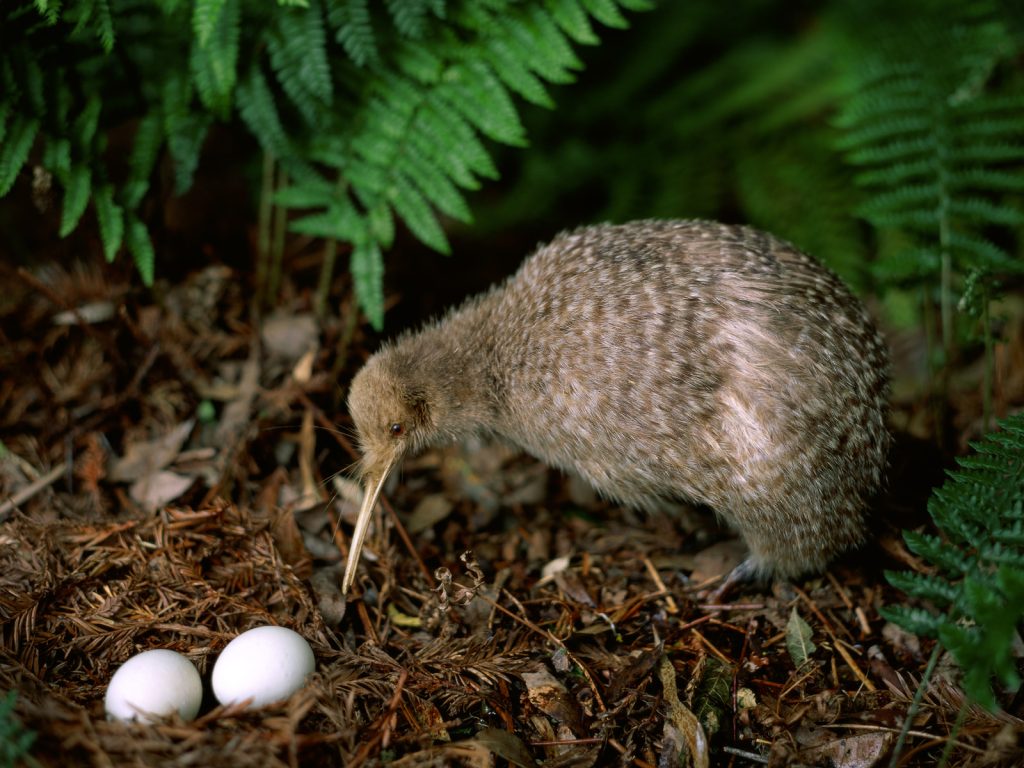
Kiwi Chick Development
| Stage | Description |
| Hatching | Fully feathered |
| First Foraging | Within 3-5 days |
| Predation Risk | Extremely high in wild |
| Conservation Aid | Chick rearing centers |
The Fight for Survival
Predators and Threats
One of the biggest challenges Kiwi birds face is predation by introduced mammals like dogs, cats, rats, and stoats. Unlike native predators, these animals hunt Kiwi eggs, chicks, and even adults. Due to their ground-dwelling nature and lack of flight, Kiwis are highly vulnerable. Conservation strategies such as predator traps, dog control, and fenced sanctuaries have become essential to their survival.
Common Kiwi Predators
| Predator | Impact on Kiwi | Control Measures |
| Stoats | Kill chicks | Traps, poison baits |
| Rats | Eat eggs | Poison, eradication |
| Dogs | Kill adults | Dog-free zones |
Conservation Efforts
Programs and Initiatives
New Zealand has launched numerous conservation programs to protect Kiwi populations. Organizations like Kiwis for Kiwi and the Department of Conservation work to monitor wild populations, educate the public, and rehabilitate injured birds. Breeding programs and egg-rearing projects have increased the chances of chick survival. Some national parks now have predator-proof fences to ensure safer environments.
Major Kiwi Conservation Programs
| Organization | Main Role |
| Kiwis for Kiwi | Fundraising, awareness, rearing |
| DOC (NZ Gov) | Policy, fieldwork, protection |
| Sanctuaries | Predator control, reintroductions |
Kiwi Bird Behavior
Nocturnal Habits and Foraging
Kiwi birds are primarily nocturnal, emerging from their burrows at dusk to forage for food. Their keen sense of smell, a rarity among birds, allows them to detect insects and worms underground. They use their long beaks, equipped with nostrils at the tip, to probe the soil. This behavior is crucial for their survival, as it enables them to find food in the dense underbrush of New Zealand’s forests.
Behavioral Traits of Kiwi Birds
| Behavior | Description |
|---|---|
| Nocturnal Activity | Active during the night, resting in burrows during the day |
| Foraging Method | Uses sense of smell and long beak to locate and extract prey from the soil |
| Territoriality | Defends territory through calls and physical displays |
| Social Structure | Generally solitary, forming monogamous pairs during breeding season |
Communication and Vocalizations
Unique Sounds and Calls
Kiwis communicate through a range of vocalizations, especially during the breeding season. Males emit high-pitched whistles, while females produce lower, throaty calls. These sounds serve to establish territory and attract mates. Vocal communication is vital for these nocturnal birds, as it helps them navigate their environment and maintain social bonds in the dark.
Kiwi Vocalizations
| Call Type | Purpose | Frequency Range |
|---|---|---|
| Male Whistle | Territory establishment, mating | High-pitched |
| Female Grunt | Mate attraction, communication | Low-pitched |
| Alarm Call | Predator alert | Variable |
| Chick Chirp | Parent-chick interaction | Soft, high-pitched |
Kiwi Bird Lifespan and Longevity
Life Expectancy in the Wild
Kiwis have a relatively long lifespan for birds, often living up to 25-50 years in the wild. Their longevity is attributed to their slow metabolism and low reproductive rate. However, survival rates are heavily influenced by predation and habitat conditions. Conservation efforts aim to improve these rates by protecting habitats and controlling predators.
Kiwi Lifespan Factors
| Factor | Impact on Lifespan |
|---|---|
| Predation | High mortality in chicks due to introduced predators |
| Habitat Quality | Degraded habitats reduce food availability |
| Conservation Efforts | Predator control and habitat restoration increase survival |
| Disease | Low incidence, but can affect populations locally |
Kiwi Bird Evolutionary History
An Ancient Lineage
Kiwis belong to a group of flightless birds known as ratites, which also includes ostriches and emus. Fossil records suggest that kiwis have been present in New Zealand for millions of years. Their evolution has been shaped by the island’s isolation, leading to unique adaptations such as flightlessness and nocturnality.
Evolutionary Traits of Kiwis
| Trait | Evolutionary Significance |
|---|---|
| Flightlessness | Adaptation to predator-free environment |
| Nocturnality | Exploitation of nighttime niches |
| Enhanced Olfaction | Compensates for poor eyesight |
| Ground Nesting | Suited to forest floor habitats |
Kiwi Bird Species Diversity
Different Species Across New Zealand
There are five recognized species of kiwi, each with distinct characteristics and distributions:
- North Island Brown Kiwi (Apteryx mantelli): The most common species, found in the North Island.
- Great Spotted Kiwi (Apteryx haastii): The largest species, inhabiting mountainous regions of the South Island.
- Little Spotted Kiwi (Apteryx owenii): The smallest species, now limited to predator-free islands.
- Rowi (Apteryx rowi): A rare species with a limited range on the South Island.
- Tokoeka (Apteryx australis): Found in various habitats across the South Island.
Kiwi Species Overview
| Species | Size | Distribution | Conservation Status |
|---|---|---|---|
| North Island Brown | Medium | North Island | Vulnerable |
| Great Spotted | Large | South Island mountains | Vulnerable |
| Little Spotted | Small | Offshore islands | Near Threatened |
| Rowi | Medium | Okarito Forest, South Island | Critically Endangered |
| Tokoeka | Variable | South Island | Vulnerable |
Role in Ecosystem
Ecological Importance
Kiwis play a significant role in New Zealand’s forest ecosystems. By foraging for insects and worms, they help control invertebrate populations and contribute to soil health through their digging activities. Their presence indicates a healthy, functioning ecosystem.
Ecological Contributions of Kiwis
| Contribution | Ecological Impact |
|---|---|
| Invertebrate Control | Maintains balanced populations of soil invertebrates |
| Soil Aeration | Enhances soil structure and nutrient cycling |
| Seed Dispersal | Aids in the propagation of native plant species |
| Indicator Species | Reflects the overall health of forest ecosystems |
Cultural Significance in Māori Tradition
Symbolism and Mythology
For the Māori people, kiwis are taonga (treasures) and hold deep cultural significance. They feature in various legends and are considered guardians of the forest. The bird’s behaviors and characteristics are often used as metaphors in Māori storytelling and proverbs.
Māori Cultural Perspectives on Kiwis
| Aspect | Cultural Interpretation |
|---|---|
| Nocturnal Nature | Symbolizes mystery and the unseen world |
| Ground Dwelling | Represents humility and connection to the earth |
| Protective Role | Seen as guardians of the forest |
| Sacred Status | Regarded with reverence and protected in tradition |
Kiwi Bird in Modern New Zealand Identity
National Symbol and Emblem
The kiwi is an enduring symbol of New Zealand, representing the nation’s unique wildlife and natural heritage. New Zealanders are colloquially known as “Kiwis,” and the bird features prominently in logos, currency, and military insignia.
Kiwi Symbolism in New Zealand
| Usage | Significance |
|---|---|
| National Identity | Emblematic of New Zealanders’ character |
| Military Insignia | Represents bravery and uniqueness |
| Tourism Branding | Highlights New Zealand’s distinct fauna |
| Conservation Logos | Symbolizes commitment to preserving biodiversity |
Conservation Challenges and Strategies
Threats to Kiwi Survival and Protection Efforts
The kiwi bird, while cherished and iconic, faces numerous challenges that threaten its existence. Chief among these are introduced predators such as dogs, stoats, and rats, which pose a significant threat to kiwi chicks and even adults. These mammals, not native to New Zealand, easily prey on the defenseless kiwi due to its flightlessness and ground-dwelling habits.
Habitat loss due to deforestation and human development also reduces their foraging and breeding grounds, increasing the risk of extinction. Kiwi populations in the North Island have been more vulnerable to such changes.
To counter these threats, conservation programs like “Kiwis for Kiwi,” predator-free sanctuaries, breeding programs, and government-led initiatives are actively helping in protecting kiwi species. GPS tracking, egg collection, incubation, and chick-rearing in safe zones are part of their fight for survival. Public awareness campaigns also help reduce dog attacks by educating owners.
Major Threats and Conservation Solutions
| Threat | Conservation Strategy |
|---|---|
| Predators (stoats, dogs, rats) | Predator control using traps, fencing, and dog training |
| Habitat destruction | Habitat restoration and legal protections |
| Low breeding success | Captive breeding and chick-rearing programs |
| Lack of awareness | Community education and public engagement |
Kiwi Bird and Scientific Research
Insights Into Unique Biology and Behavior
Kiwi birds have long fascinated scientists and ornithologists because of their bird-mammal traits. For example, their nostrils are located at the tip of their beak, which is rare among birds. Their feathers resemble mammal fur more than typical bird feathers, and they possess whiskers, another unusual trait in birds.
Recent scientific studies have examined the kiwi’s olfactory system, revealing that they have one of the most developed senses of smell among birds. Researchers have also explored their genetic diversity to understand the evolutionary relationship between kiwi species, including Apteryx mantelli and Apteryx australis.
In addition, modern technologies such as GPS collars and motion cameras help scientists track kiwi behavior, mating patterns, population movements, and nocturnal foraging activities. This research helps conservationists design better plans to preserve kiwi habitats and increase their numbers.
Kiwi Bird Research Focus Areas
| Research Area | Key Findings and Importance |
|---|---|
| Sense of smell | Most developed olfactory system among birds |
| Evolutionary studies | Helps track lineage, speciation, and genetic health |
| Breeding patterns | Informs breeding and incubation practices |
| Movement tracking | Assists in understanding territory size and behavior |
Importance and Meaning of Kiwi Bird in Global Context
Global Recognition and Enduring Significance
Globally, the kiwi bird stands as a powerful symbol of New Zealand, biodiversity, and the urgent need for conservation of endemic species. Unlike many birds, the kiwi has come to represent not only a country but an entire culture and conservation movement.
In the global conservation community, the kiwi is seen as a flagship species—used to raise awareness for forest habitat preservation and to mobilize funding and support for protecting endangered birds and wildlife.
The bird’s unique characteristics—nocturnal habits, inability to fly, large eggs, and mammalian features—make it a standout species in the animal kingdom. Its iconic shape, brown feathers, long legs, small eyes, and whiskered face are recognized worldwide as a natural marvel.
Preserving the kiwi means preserving an important piece of global natural history. As threats from predation, habitat loss, and climate change loom, the kiwi becomes a symbol of both fragility and resilience—a bird in a fight for survival that captures the world’s attention.
Kiwi Bird’s Global Importance
| Aspect | Meaning and Global Impact |
|---|---|
| Biodiversity Conservation | Represents urgent need to protect endemic species |
| Scientific Interest | Offers unique insights into evolution and adaptation |
| Cultural Emblem | Emblematic of national pride and identity |
| Eco-tourism | Drives awareness and sustainable tourism in New Zealand |
Top 10 Fun Facts About Kiwi Bird:
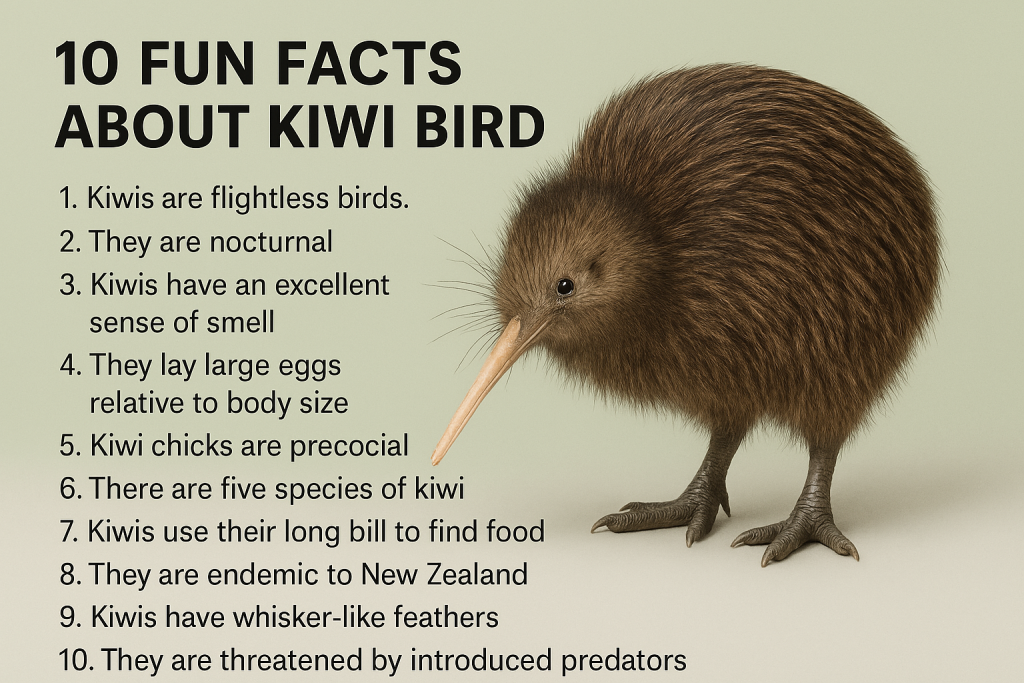
❓ 10 Frequently Asked Questions on the Speciality of Kiwi Bird
Q1: Why is the kiwi bird considered special?
A1: The kiwi bird is special due to its unique traits such as being flightless, having a strong sense of smell, laying large eggs, and its significance in Māori culture and New Zealand identity.
Q2: What makes the kiwi bird different from other birds?
A2: Kiwis are different because they have nostrils at the tip of their beak, fur-like feathers, whiskers, and they are nocturnal. Their anatomy resembles a mammal more than a bird.
Q3: What is the kiwi bird’s main diet?
A3: Kiwi birds mainly forage for insects, worms, grubs, and small invertebrates using their keen sense of smell.
Q4: Can kiwi birds fly?
A4: No, kiwi birds are completely flightless due to their small wings and lack of a keel on the breastbone where flight muscles typically attach.
Q5: Where do kiwi birds live?
A5: Kiwi birds live in the forests, grasslands, and subalpine regions of New Zealand, especially on the North Island and predator-free offshore islands.
Q6: What are the main threats to kiwi birds?
A6: The biggest threats are predation by stoats, dogs, and rats, as well as habitat destruction from human activities.
Q7: How big is a kiwi bird?
A7: Kiwis range from 14 to 20 inches in height and weigh between 1.3 to 3.3 kg, depending on the species.
Q8: How do kiwi birds reproduce?
A8: Kiwi birds form strong mating bonds and lay one of the largest eggs relative to body size. The male usually incubates the egg.
Q9: How long do kiwi birds live?
A9: Kiwi birds can live up to 25–50 years in the wild, particularly in protected areas.
Q10: What is being done to conserve kiwi birds?
A10: Active conservation programs include predator control, habitat restoration, captive breeding, chick rearing, and public education campaigns.
Visit: What Is The Speciality of to explore more interesting and fun facts about birds, animals, countries, festivala and more.
